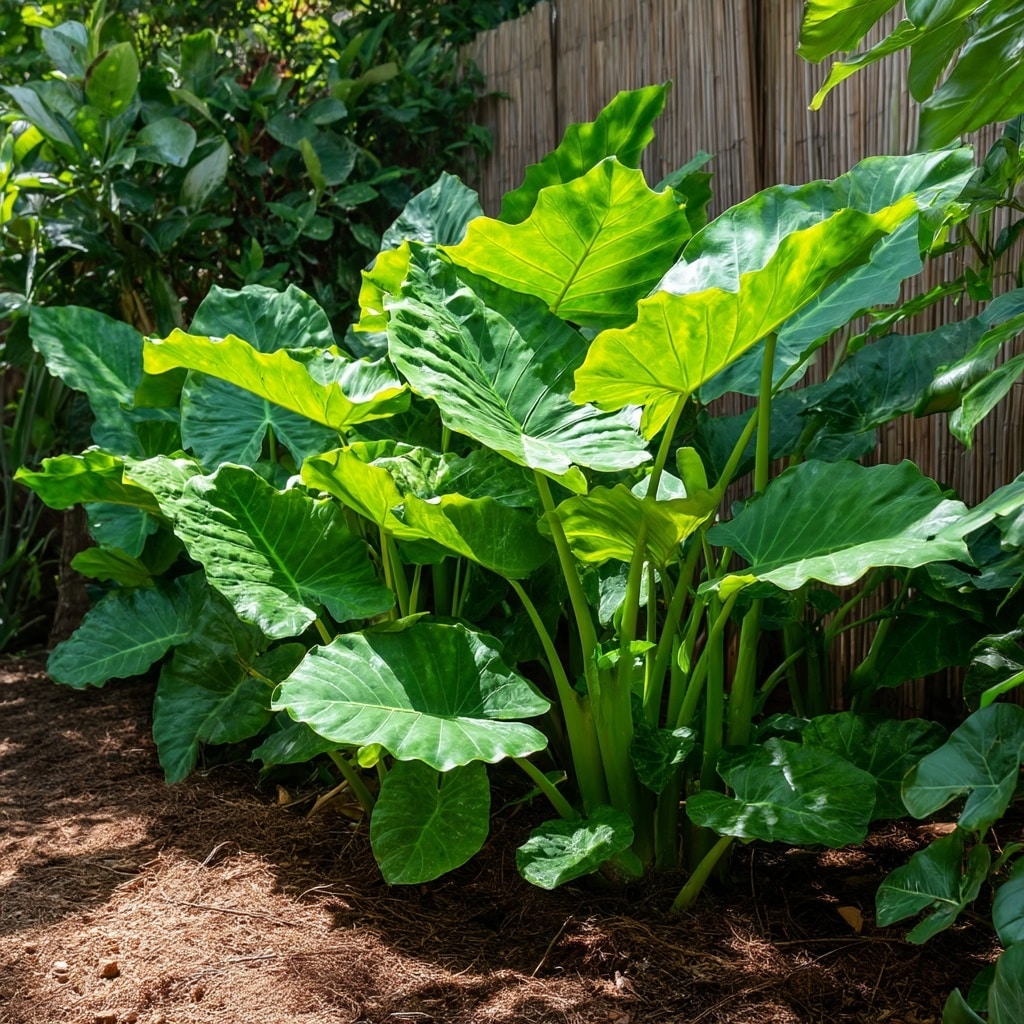Elephant ears plants are tropical tubers known for their bold, oversized leaves that can instantly transform any garden or indoor corner into a lush, vibrant escape. Whether grown outdoors in warm climates or kept in containers inside your home, these dramatic plants are surprisingly easy to grow and care for. With their fast growth and statement-making foliage, elephant ears plants thrive in heat and humidity but can also adapt to cooler regions with the right seasonal care. If you’re looking to bring a bit of the tropics to your yard, patio, or living room, this guide will walk you through everything you need to grow healthy, thriving elephant ears plants.
Table of Contents
How to Grow and Care for Elephant Ears Plants Outdoors
Elephant ears plants love warm weather, rich soil, and plenty of moisture—making them ideal for outdoor gardens in the right zones. Whether you’re planting tubers or starter plants, a few simple steps can help these tropical beauties thrive through the growing season.
Elephant ears plants grow best in USDA zones 8 to 10, where they act as perennials and can reach up to 5 feet tall with massive, heart-shaped leaves. In cooler climates, treat them as annuals or overwinter the tubers to enjoy them again next year.
Plant them in late spring or early summer, when soil temperatures stay consistently above 50°F (10°C). You can start with either dormant tubers or nursery-grown plants—both grow quickly once the days warm up.
Soil
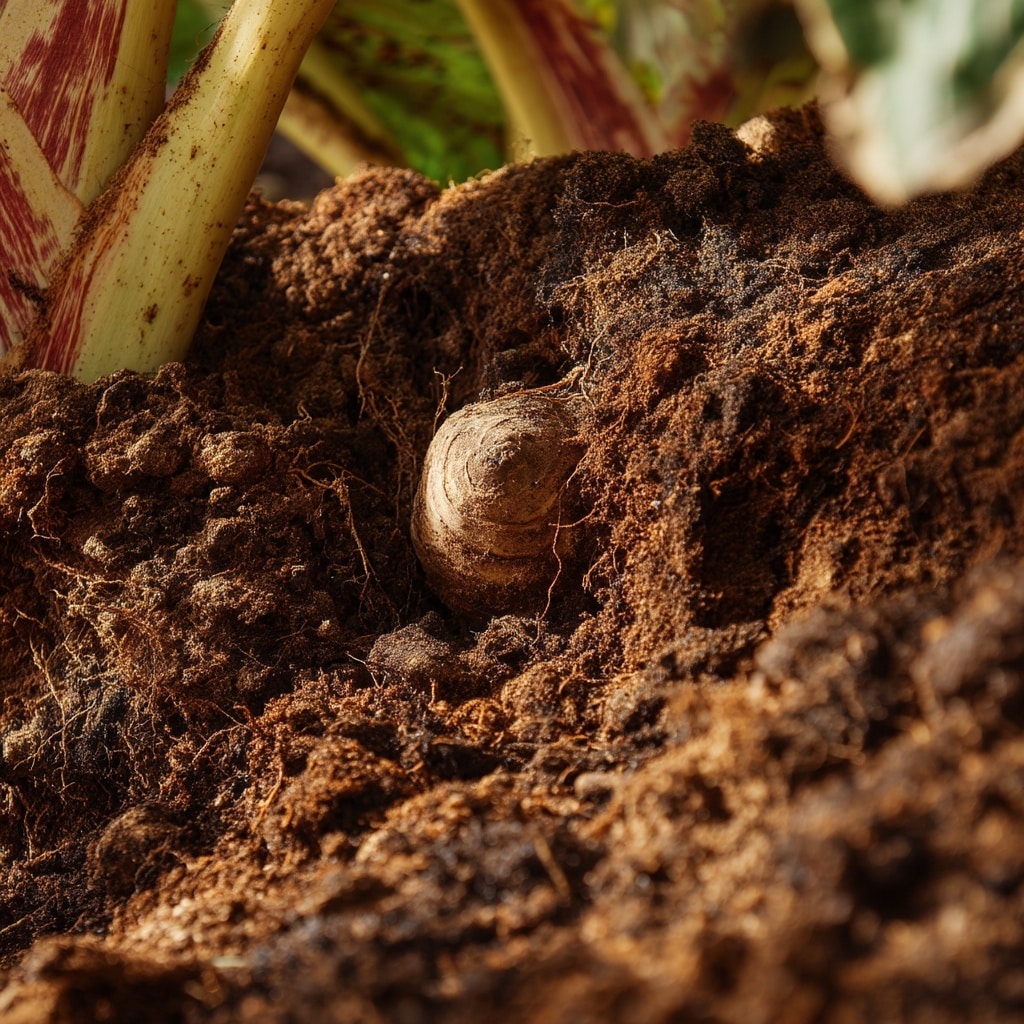
For best results, plant elephant ears plants in moist, well-draining soil that’s neutral to slightly acidic. Work in organic compost to boost nutrients and retain moisture. Tubers should be planted a few inches deep with the pointed end facing up.
Light
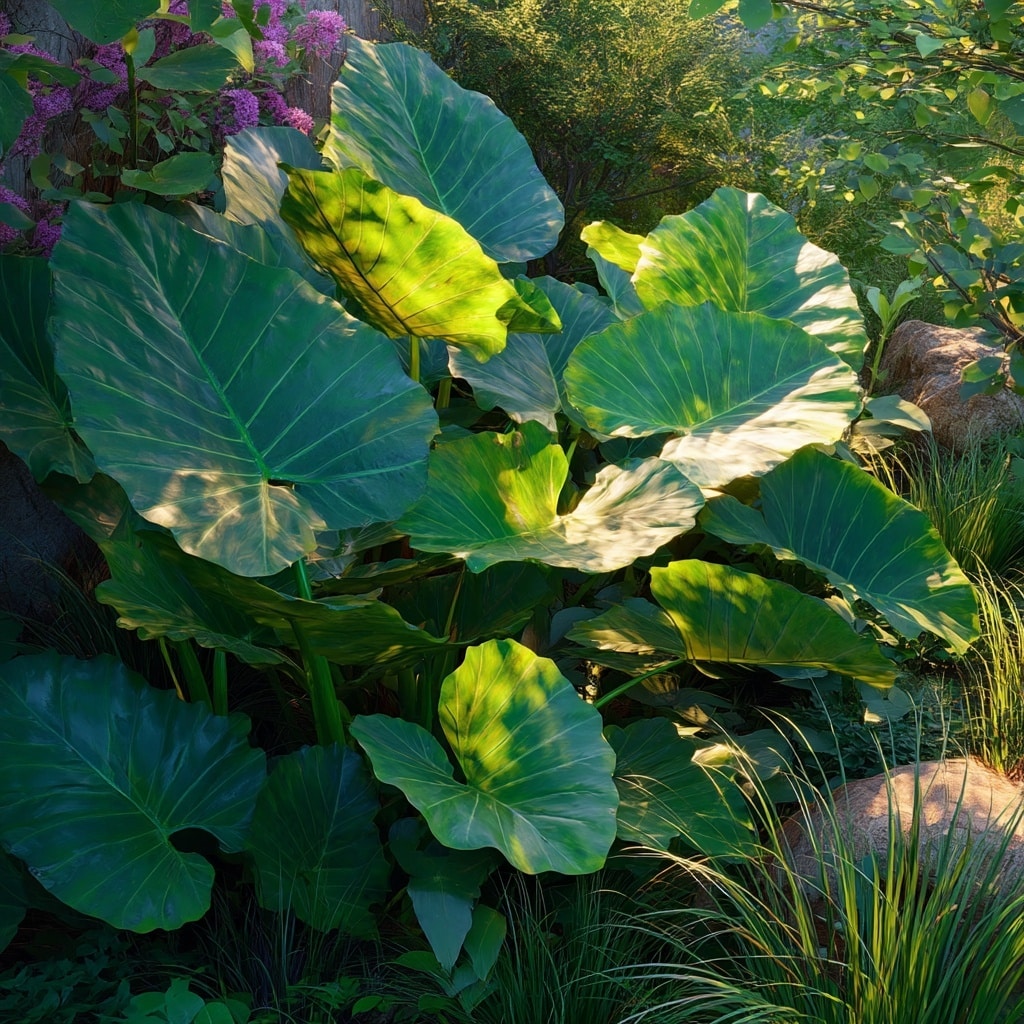
While elephant ears plants tolerate full sun, they prefer morning sun and afternoon shade in hotter climates. In cooler regions, they can handle more direct sunlight. Too much intense heat can cause leaf scorch, so location matters.
Watering
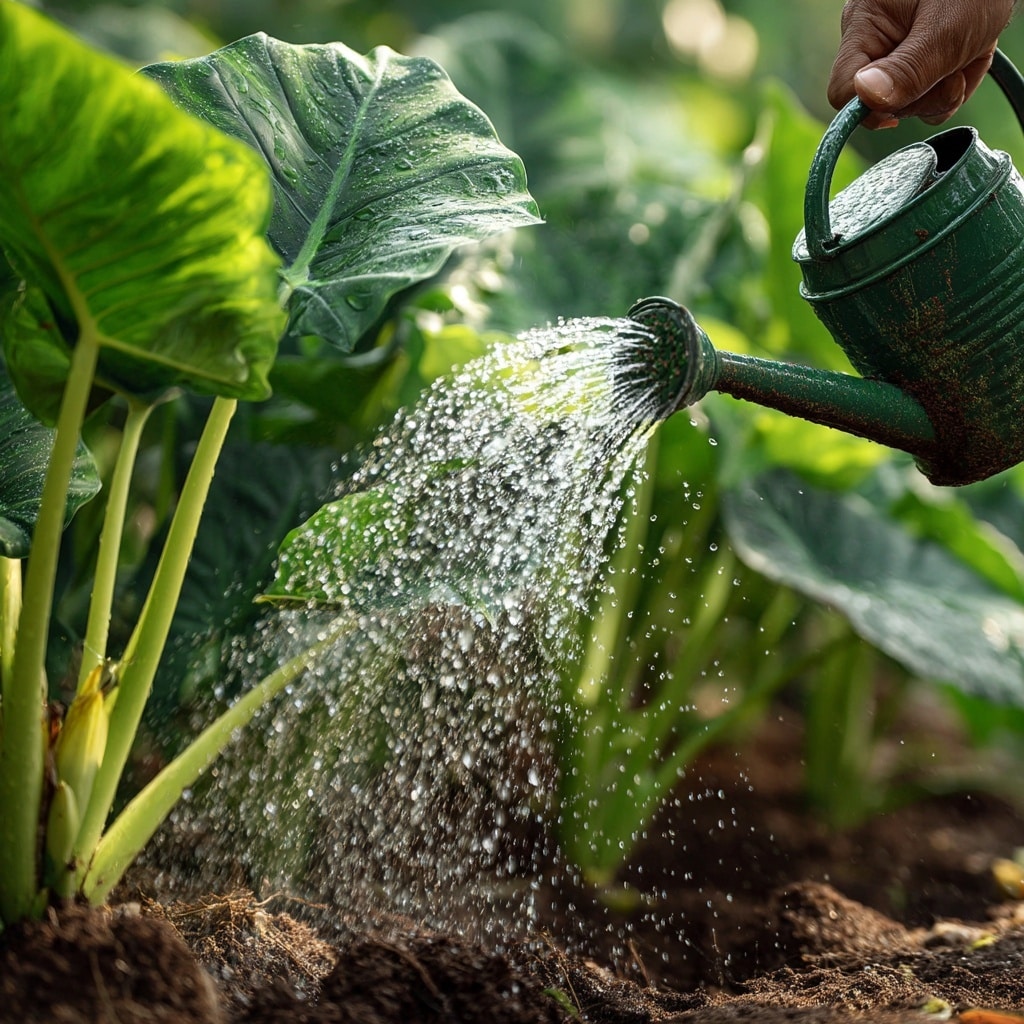
These plants thrive in consistently damp soil. Don’t let the soil dry out completely, especially during hot spells. In containers, elephant ears plants may need daily watering during summer. Always check the top inch of soil—if it’s dry, it’s time to water.
Fertilizing
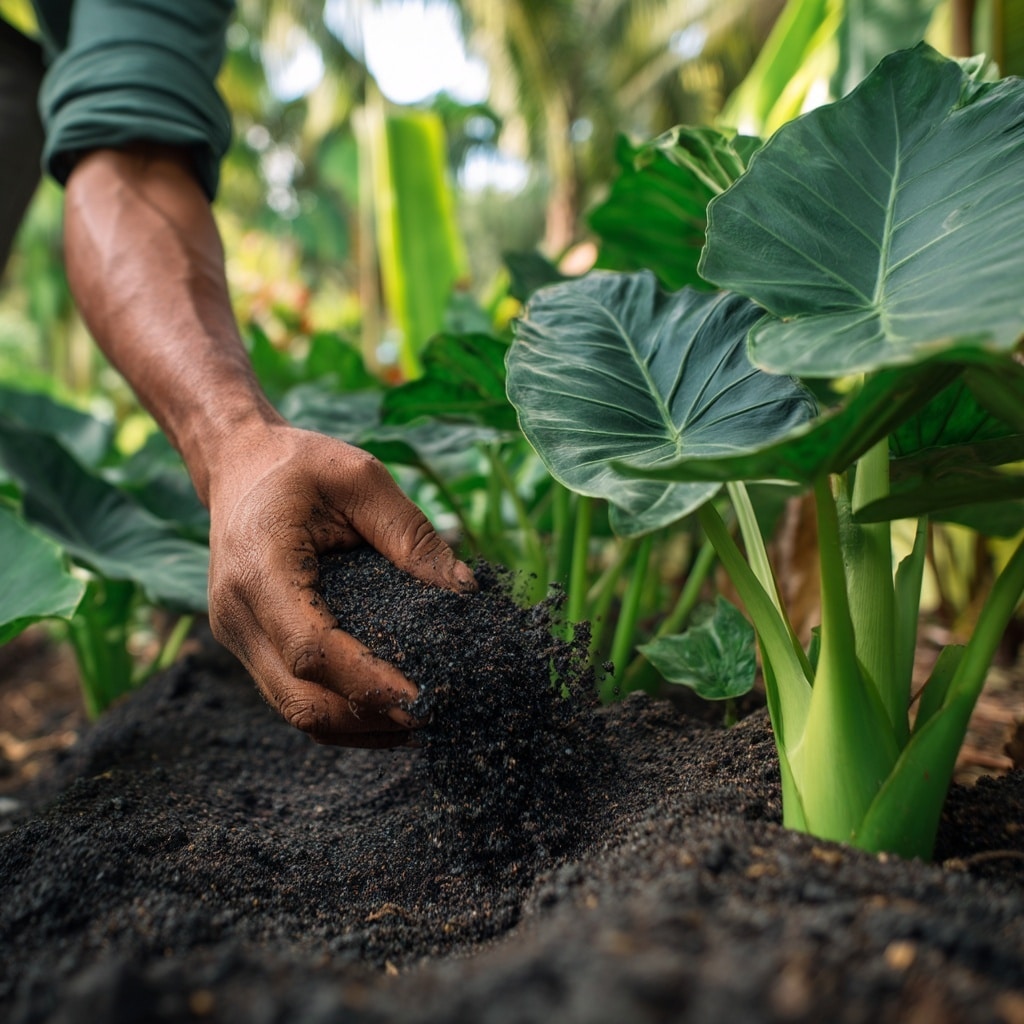
Feed elephant ears plants monthly during the growing season with a nitrogen-rich fertilizer to promote strong leaf development. Organic slow-release fertilizers or liquid plant food both work well.
Pruning
Trim away yellowing or damaged leaves with clean, sharp pruners. Regular pruning keeps the plant tidy and encourages healthier growth. Remove spent foliage before winter to help the tubers conserve energy.
How to Grow and Care for Elephant Ears Plants Indoors

If you don’t live in a tropical climate, you can still enjoy elephant ears plants indoors. These bold-leaved beauties adapt well to life in containers and can be overwintered as houseplants or stored dormant until the next season. With the right potting setup and care, they’ll thrive just as they do outdoors.
Potting Elephant Ears Plants

When growing elephant ears plants indoors, start with a large container—at least 1 gallon in size—to allow room for their fast-growing roots. Use moist, well-draining garden soil, and plant the tuber 2 to 3 inches deep, pointed side up.
Place the pot in a warm, sunny location—ideally somewhere above 60°F (16°C). Hold off on watering until you see a sprout break through the soil. After that, keep the soil consistently moist, but not soggy.
To mimic their native tropical environment, maintain high humidity by:
- Using a humidifier
- Grouping plants together
- Setting the pot on a tray of pebbles and water
Repotting Tips
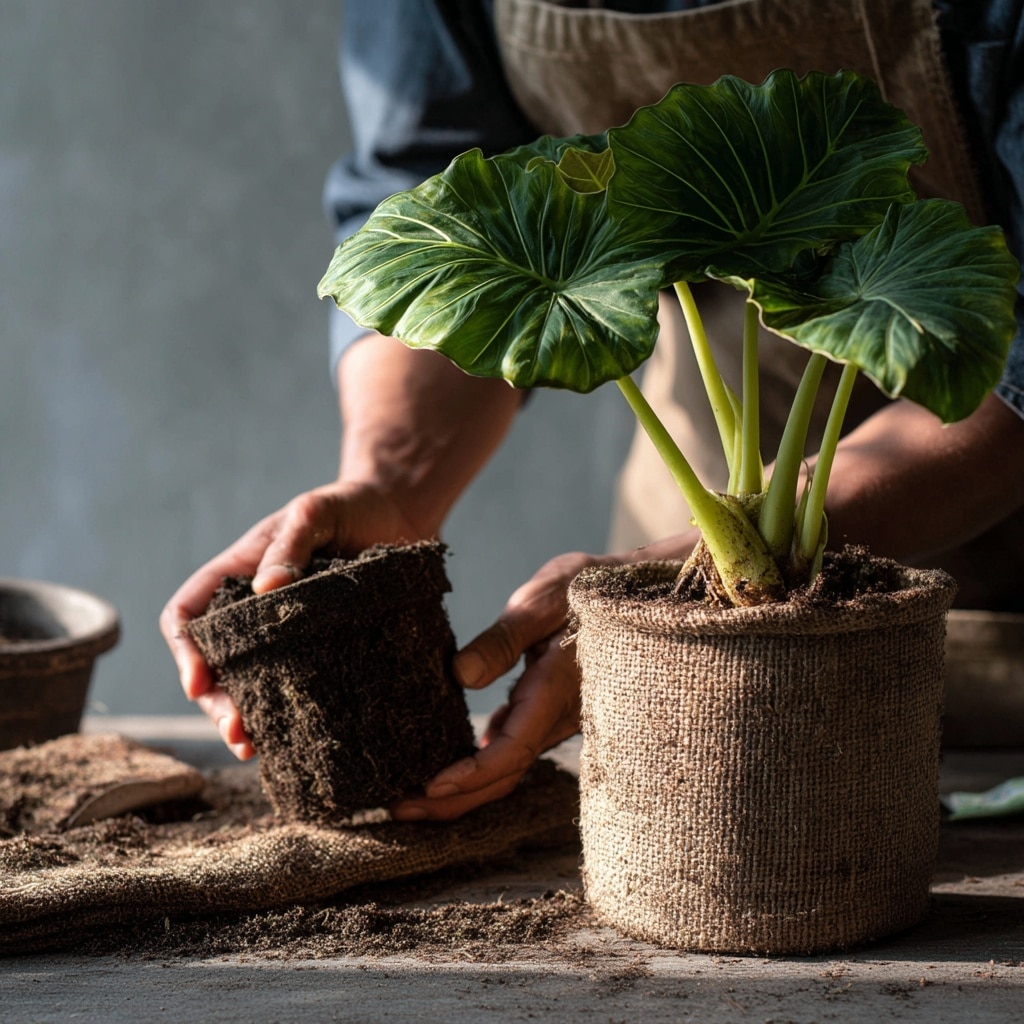
Over time, your elephant ears plant may outgrow its pot. Signs it’s time to repot include:
- Roots circling the surface
- Roots growing out of the drainage holes
- Slowed or stunted growth
Choose a pot 1–2 inches wider than the current one. Gently loosen the root ball and transfer it into fresh, moist potting mix. Repotting is typically needed once a year, especially during active growth.
Overwintering Indoors
When temperatures drop in fall, bring container-grown elephant ears plants indoors before the first frost.
You have two choices:
- Keep them as houseplants: Move them to a warm, bright room and maintain humidity.
- Store them dormant: Let the plant die back naturally. Remove the tuber from the soil, let it dry, then store in a cool, dark place like a garage or basement in a paper bag or cardboard box.
Replant in spring once the risk of frost has passed.
How to Propagate Elephant Ears Plants
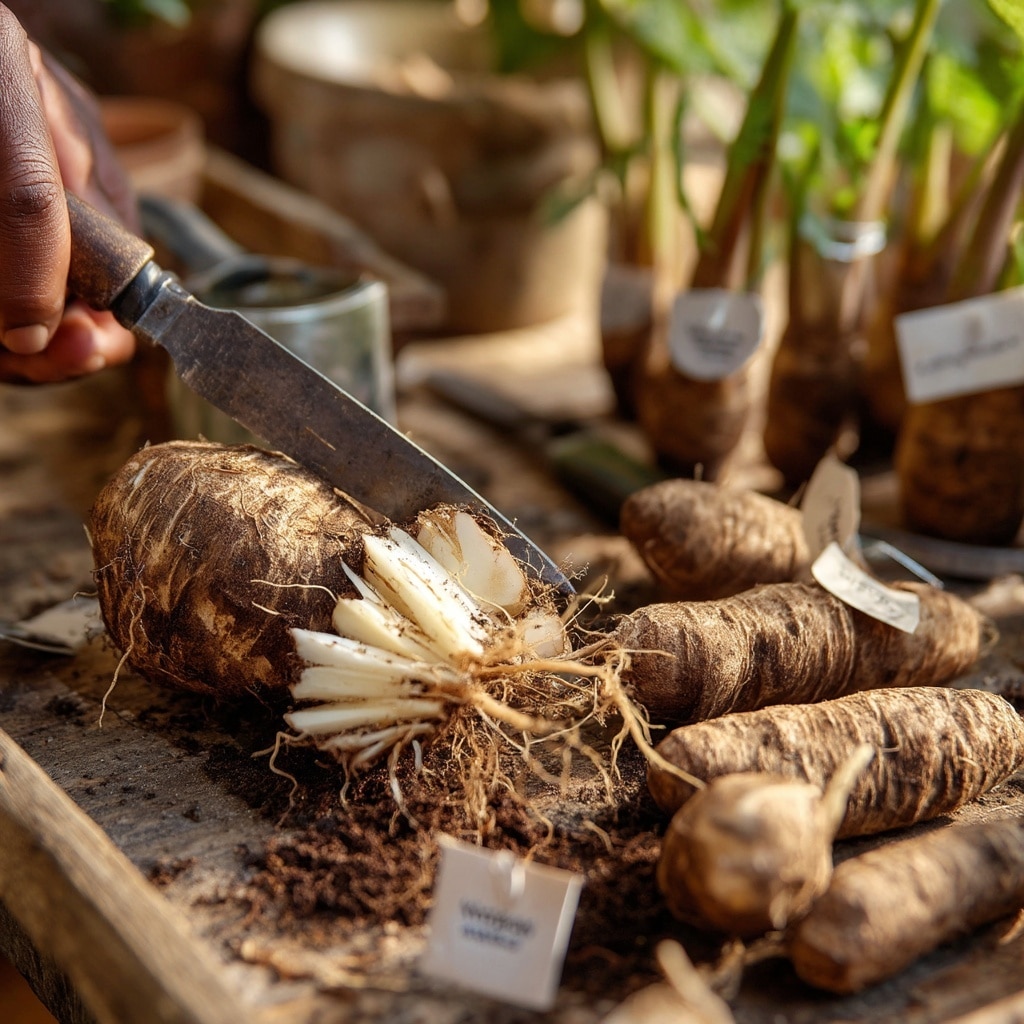
If your elephant ears plants are thriving, propagation is a great way to multiply your collection—or share with fellow plant lovers. These plants propagate easily through tuber division, making them perfect for home gardeners looking to expand their tropical patch.
Propagation by Tuber Division
The most effective method is dividing the tubers, which are the underground storage organs that power new growth each year. Here’s how to do it safely:
- Wait for dormancy: Late fall or early spring is the best time to divide, when the plant is not actively growing.
- Dig carefully: Gently lift the entire plant from the soil or pot. Brush off excess dirt so you can clearly see the tubers.
- Identify offshoots: Look for smaller bulbs or “offsets” attached to the main tuber—these are your new plants.
- Separate cleanly: Use a sharp, sterilized knife to cut off the offsets. Make sure each piece has at least one eye or sprouting point.
- Replant: Place each tuber 2–3 inches deep in fresh, moist soil. Keep warm and lightly watered until new growth appears.
Bonus: Propagate from Plantlets
Some varieties of elephant ears plants grow runners—long stems that produce baby plants (called plantlets) at the ends. Once these are a few inches tall and have roots of their own, you can:
- Cut them from the runner
- Pot them up individually in small containers
- Treat them like mature plants and follow regular care routines
With proper division and care, elephant ears plants can multiply quickly, filling your garden or indoor space with bold, leafy drama year after year.
Toxicity of Elephant Ears Plants

While stunning in any setting, elephant ears plants come with a serious safety note: they are toxic to humans and animals if ingested. This is due to the presence of insoluble calcium oxalates, which can cause irritation and health issues upon contact or consumption.
What Makes Them Toxic?
All parts of the plant—including the leaves, stems, and tubers—contain calcium oxalate crystals. When chewed or swallowed, these crystals can cause:
- Mouth and throat irritation
- Swelling of the lips or tongue
- Burning sensations
- Excessive drooling (in pets)
- Nausea or vomiting
Keep Pets and Children Safe
Cats, dogs, and young children are the most at risk. Even small amounts can trigger symptoms. For pet owners, it’s best to:
- Place potted elephant ears plants out of reach
- Avoid planting them in areas where pets roam freely
- Monitor outdoor areas where leaves may drop
If you suspect ingestion, seek medical or veterinary help immediately.
Should You Avoid Growing Them?
Not necessarily. Many people safely grow elephant ears plants by using common-sense precautions—like supervised planting zones and strategic placement indoors. Just treat them like you would any plant with known toxicity and educate your household about the risks.
Common Problems with Elephant Ears Plants
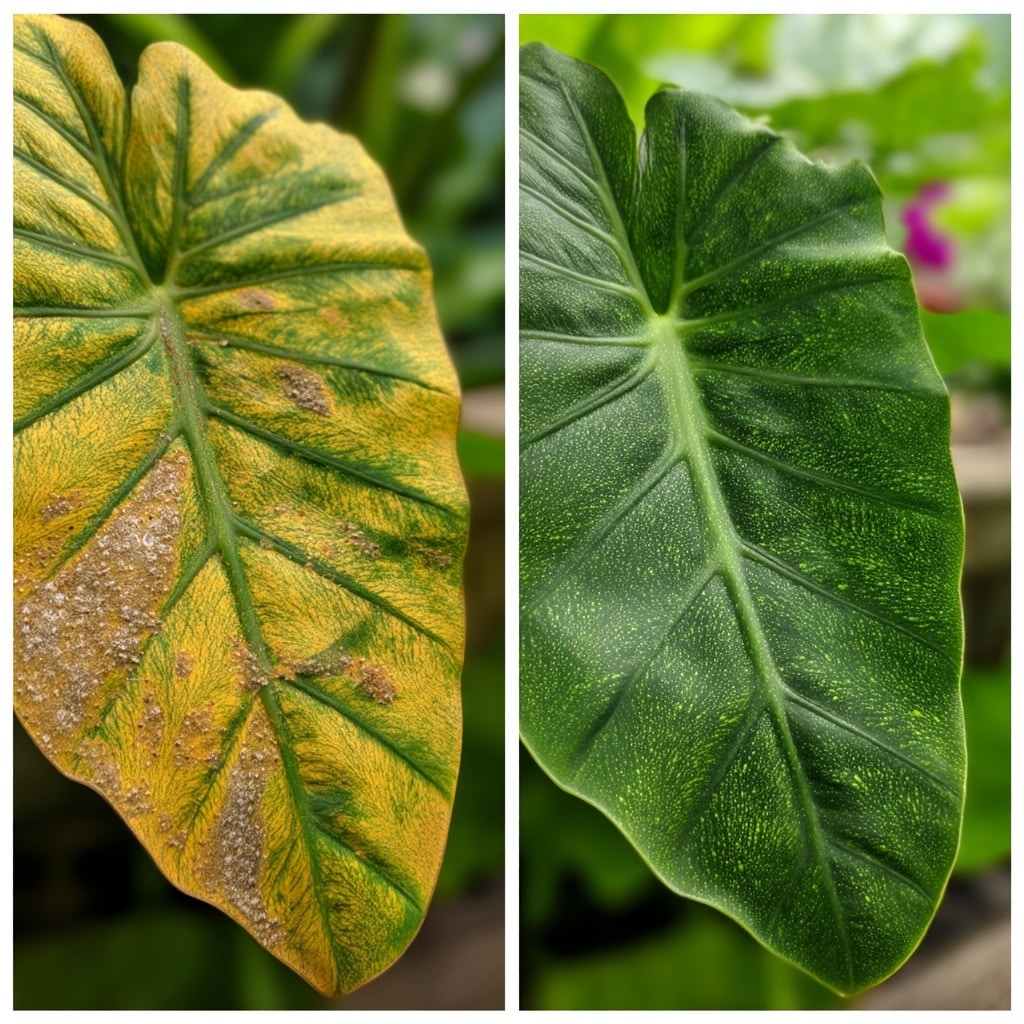
While elephant ears plants are generally easy to grow, they can face a few issues—especially when growing conditions aren’t ideal. Knowing how to spot and fix problems early helps keep your plants lush and healthy all season long.
Pests: Spider Mites
The most common pest you’ll encounter is the spider mite, a tiny insect that thrives in warm, dry conditions.
What to look for:
- Speckled or faded leaves
- Tiny webbing on leaf undersides
- General leaf discoloration
Solution:
Increase humidity—spider mites hate moisture. Try misting the leaves or using overhead watering. In stubborn cases, wipe leaves with a damp cloth or use insecticidal soap.
Yellow or Drooping Leaves
Yellowing leaves can be caused by:
- Dry roots
- Low humidity
- Too much direct sunlight
This is especially common when elephant ears plants are moved from indoors to outdoors too quickly. This sudden shift can cause leaf scorch, where intense sun zaps the foliage.
Fixes:
- Water when the top inch of soil is dry
- Boost humidity around indoor plants
- Transition outdoor placement slowly—start in shade, then gradually increase sun exposure over 1–2 weeks
Cold Damage
These tropical plants are very sensitive to frost. Cold temperatures can quickly kill the foliage or damage the tuber if left in the ground.
What to do:
- Bring containers indoors before first frost
- For in-ground plants, dig up tubers and store them in a cool, dry place for winter
Pro Tip: Healthy Growth = Fewer Problems
Most issues with elephant ears plants come down to environmental stress. Keep them well-watered, warm, and humid, and you’ll prevent most problems before they start.
Conclusion
With their dramatic foliage and fast growth, elephant ears plants are a bold and rewarding addition to any garden or indoor space. Whether planted directly in the ground or grown in containers, they bring a tropical feel that’s easy to maintain with the right soil, water, light, and care. Just remember to keep pets and small children away, as these plants are toxic if ingested. With a bit of planning and seasonal attention, your elephant ears plants will thrive year after year, offering bold beauty and tropical vibes wherever they grow.


